Growing garlic is an easy and rewarding experience for gardeners of all skill levels. Garlic is a popular, versatile crop that thrives in various climates, making it an excellent choice for home gardens. With proper care and planning, you can enjoy a bountiful harvest of fresh, flavorful bulbs.
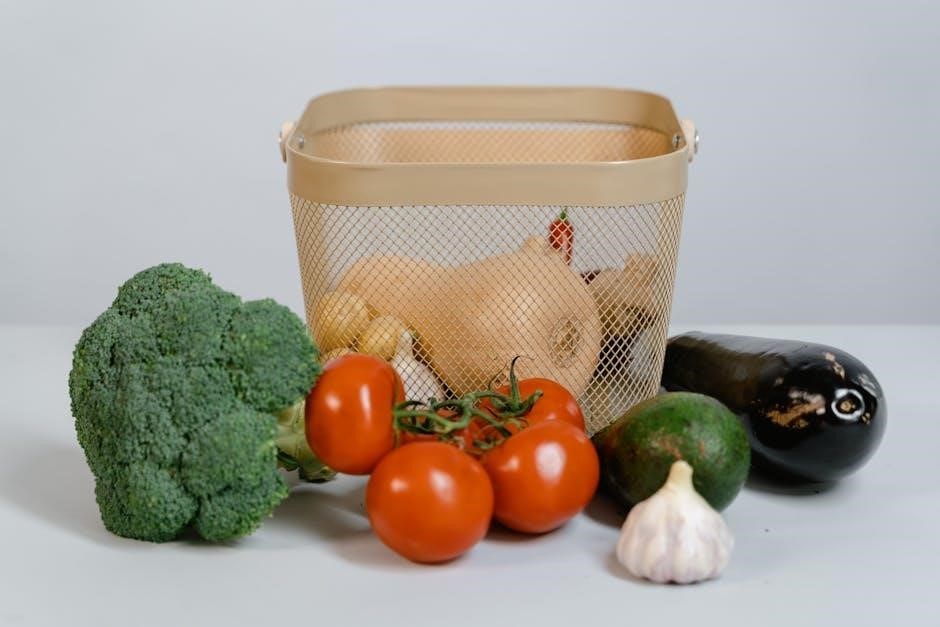
Why Garlic is a Great Crop for Home Gardeners
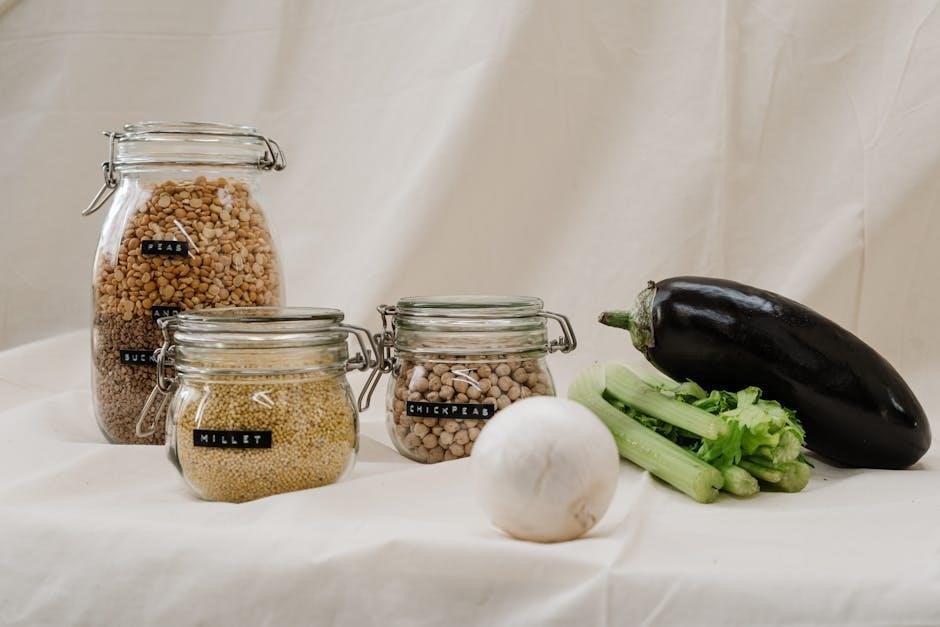
Growing garlic is an excellent choice for home gardeners due to its ease of cultivation and hardiness. It requires minimal care and can thrive in diverse climates, making it suitable for both experienced growers and beginners. Garlic is also a versatile crop, adding flavor to numerous dishes and providing a continuous supply when properly stored; Its low-maintenance nature and high yield make it a rewarding addition to any garden, ensuring a bountiful harvest with little effort.
Brief Overview of the Planting Process
Planting garlic involves selecting healthy cloves, preparing the soil, and timing the planting season correctly. Typically, garlic is planted in fall or early spring, depending on the climate. Cloves are spaced 4-6 inches apart and planted 2-4 inches deep. The soil is often mulched to retain moisture and suppress weeds. Regular watering and weeding are essential during growth. After about 8-9 months, when the tops yellow, the bulbs are ready to harvest. Proper curing ensures long-term storage and flavor preservation.
Choosing the Right Variety of Garlic
Selecting the right garlic variety is crucial for a successful harvest. Garlic types vary in flavor, size, and climate adaptability, ensuring there’s a suitable option for every gardener and region.
Softneck vs. Hardneck Garlic: Key Differences
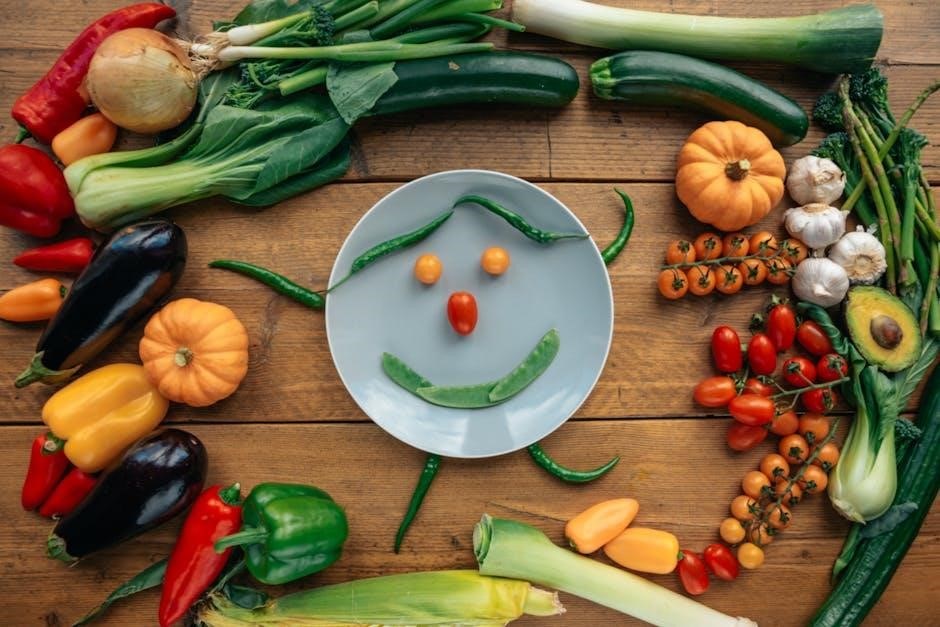
Softneck and hardneck garlic are the two main categories, each with unique characteristics. Softneck garlic, the most common type, has a flexible neck and is ideal for warmer climates, storing longer and growing larger bulbs. Hardneck garlic, with its rigid central stem, thrives in cooler climates and offers a stronger, more complex flavor profile. Understanding these differences helps gardeners choose varieties that suit their climate and desired flavor, ensuring optimal growth and a successful harvest. Both types are popular, but their needs and outcomes vary.
Best Varieties for Different Climates
Choosing the right garlic variety for your climate is crucial for a successful harvest. For warmer climates, softneck varieties like ‘Silverskin’ and ‘Artichoke’ garlic are ideal due to their heat tolerance and longer storage life. In cooler climates, hardneck varieties such as ‘Rocambole’ and ‘Porcelain’ excel, requiring proper winter chilling to form bulbs. In temperate zones, both types can thrive, but softneck varieties generally adapt better to milder winters. Selecting a variety suited to your region ensures healthy growth and a robust harvest. Climate-specific choices maximize flavor and yield potential for gardeners.
How to Select and Prepare Garlic Cloves for Planting
For successful garlic planting, choose large, healthy cloves from disease-free bulbs. Avoid small or damaged cloves, as they may not produce well. Break the garlic bulb into individual cloves just before planting to prevent drying out. Ensure each clove has its papery skin intact to protect against rot. Plant cloves 4-6 weeks before the ground freezes in colder climates or in early spring in warmer areas. Proper selection and preparation ensure healthy growth and a robust harvest. Timing is key for optimal root establishment.
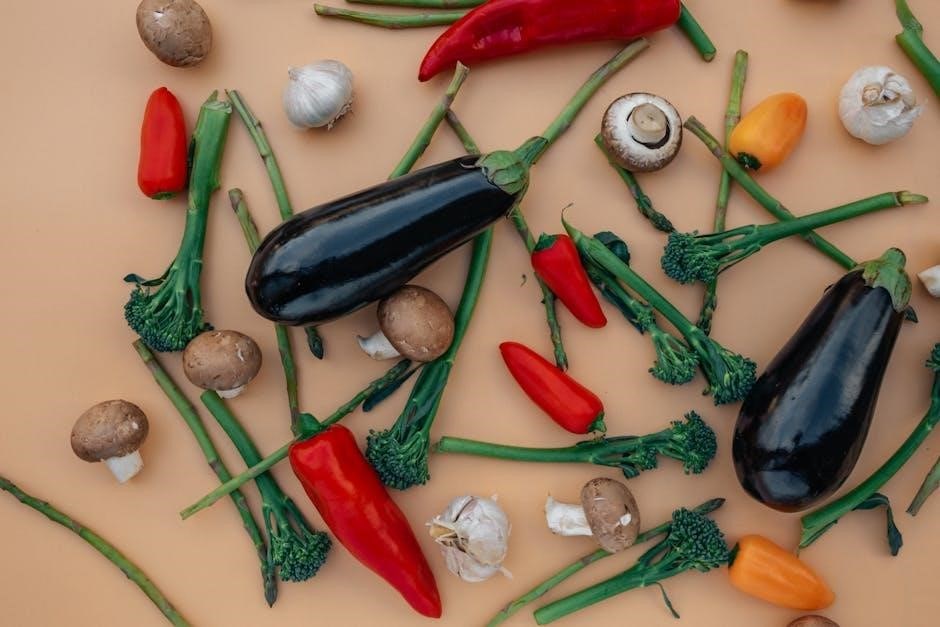
Preparing the Soil for Garlic
Growing garlic requires well-draining, fertile soil with a pH between 6.0 and 7.0. Mix in compost or aged manure to enhance soil structure and nutrient content.
Understanding Soil Types and pH Requirements
Growing garlic requires well-draining soil with a pH between 6.0 and 7.0. Sandy or loamy soils are ideal, while heavy clay soils can lead to poor drainage and root rot. Testing your soil type and pH is essential to ensure optimal growing conditions. If your soil is too acidic, add lime to raise the pH, and if it’s too alkaline, incorporate organic matter like compost to lower it. Balanced soil conditions promote healthy root development and bulb formation, leading to a successful garlic harvest.
Amending the Soil with Compost or Aged Manure

Enriching the soil with compost or aged manure is crucial for garlic cultivation. These amendments improve soil structure, fertility, and drainage, promoting healthy root growth. Compost adds organic matter, while aged manure provides essential nutrients like nitrogen and phosphorus. Incorporate 2-4 inches of compost or aged manure into the top 6-8 inches of soil before planting. This step ensures a nutrient-rich environment, encouraging robust bulb formation and flavorful harvests. Avoid fresh manure, as it can burn roots and introduce weeds.
Removing Weeds and Debris Before Planting
Clearing weeds and debris from the planting area is essential for healthy garlic growth. Weeds compete for nutrients, water, and light, which can weaken garlic plants. Manually remove weeds or use a tool like a hoe to ensure a clean start. Avoid using herbicides, as they can harm the soil and garlic. Additionally, remove any debris like rocks or dead plant material to create a smooth, even surface for planting. A clean and weed-free bed promotes better soil aeration and reduces the risk of pests and diseases, giving your garlic the best chance to thrive.
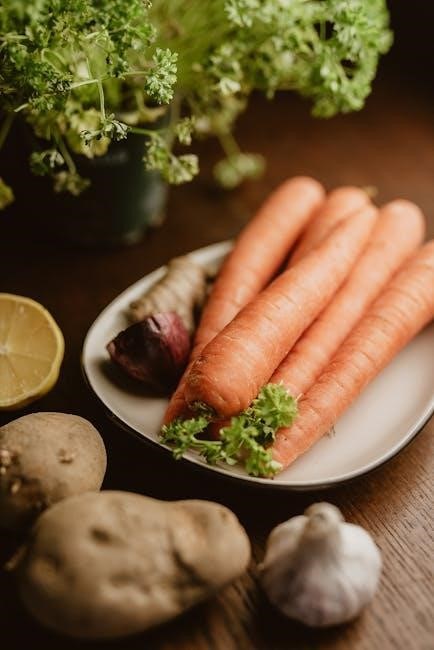
Planting Garlic
Plant garlic in late fall or early spring when the soil is workable. Ensure soil is well-prepared, cloves are spaced correctly, and mulch is applied.
Best Time to Plant Garlic in Your Region
Plant garlic 4-6 weeks before the ground freezes in cold climates or as soon as the soil is workable in warmer regions. In temperate zones, late summer to early fall planting is ideal, while areas with mild winters can plant in late winter or early spring. Check local frost dates to determine the optimal time for your area, ensuring the soil is cool but not frozen. Proper timing maximizes bulb formation and ensures a successful harvest.
Proper Spacing and Depth for Garlic Cloves
Plant garlic cloves 4-6 inches apart and 2-3 inches deep, with the pointed end facing upward. In colder climates, increase the depth to 3-4 inches for frost protection. Space rows 12 inches apart to allow easy access for weeding and maintenance. Proper spacing ensures healthy bulb development and prevents overcrowding. After planting, cover the cloves firmly with soil and keep the area consistently moist but not waterlogged. This setup promotes strong root growth and maximizes yields.
Using Mulch to Retain Moisture and Suppress Weeds
Mulching is a key step in successful garlic cultivation. Apply a 2-3 inch layer of organic mulch, such as straw, wood chips, or grass clippings, after planting. This helps retain soil moisture, regulates temperature, and suppresses weed growth. Mulch reduces the need for frequent watering and prevents weeds from competing with garlic plants for nutrients. It also improves soil health over time. Avoid over-mulching, as it can suffocate the plants. Replenish mulch as needed during the growing season to maintain its benefits.
Caring for Garlic Plants
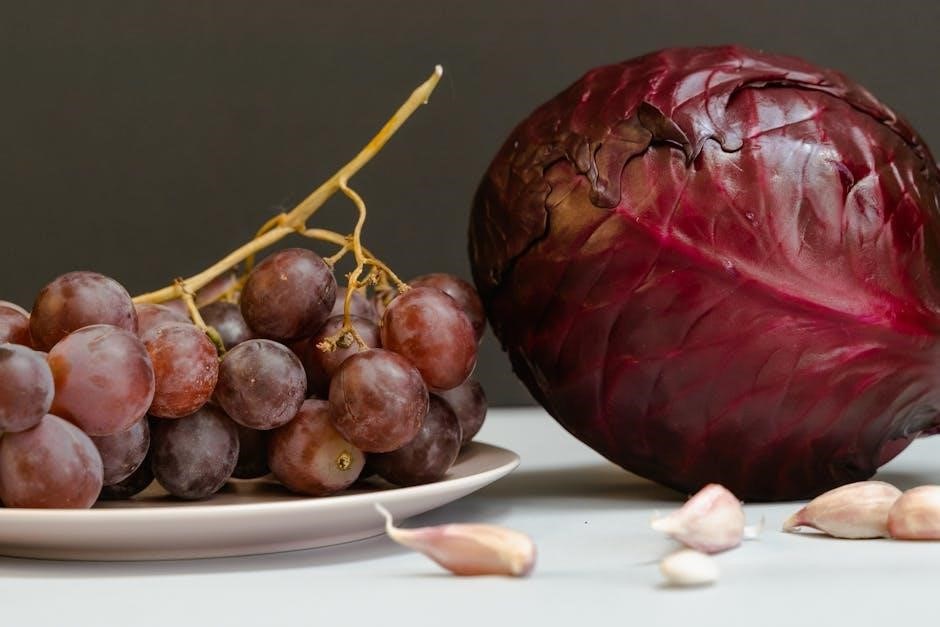
Growing garlic requires attention to its needs. It prefers well-drained soil and full sun. Regular care ensures healthy growth and a successful harvest.
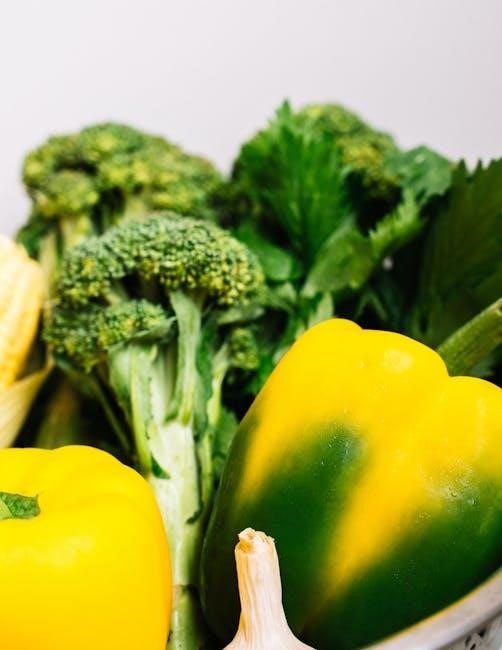
Watering Needs During Growth
Garlic plants require consistent moisture, especially during bulb formation. Water deeply once or twice a week, depending on weather conditions. Avoid overwatering, as it can lead to rot. Check soil moisture by inserting a finger into the soil up to the knuckle. If the soil feels dry, it’s time to water. Mulched beds may need less frequent watering due to retained moisture. Proper hydration supports healthy growth and flavorful bulbs. Adjust watering in extreme heat or rainfall to prevent waterlogged soil.
Managing Weeds Around Garlic Plants
Regularly managing weeds is crucial for healthy garlic growth, as weeds compete for nutrients and water. Mulching helps suppress weed growth while retaining soil moisture. Hand-weeding is effective, especially when weeds are small, to avoid damaging garlic roots. Avoid overhead watering, as it can spread weed seeds. Hoeing is another efficient method for larger areas, but be careful not to harm the garlic bulbs. Keeping the soil weed-free ensures your garlic plants receive optimal resources for robust growth and flavorful bulbs.
Dealing with Common Pests and Diseases
Growing garlic can sometimes come with challenges like pests and diseases; Common issues include aphids, mites, and fungal infections such as mold or rot. To prevent these, ensure good air circulation, avoid overwatering, and practice crop rotation. Regularly inspect plants for signs of infestation or infection. Organic pesticides or neem oil can help control pests, while removing infected areas promptly can prevent the spread of disease. Maintaining healthy soil and proper hygiene practices are key to protecting your garlic crop from these threats.
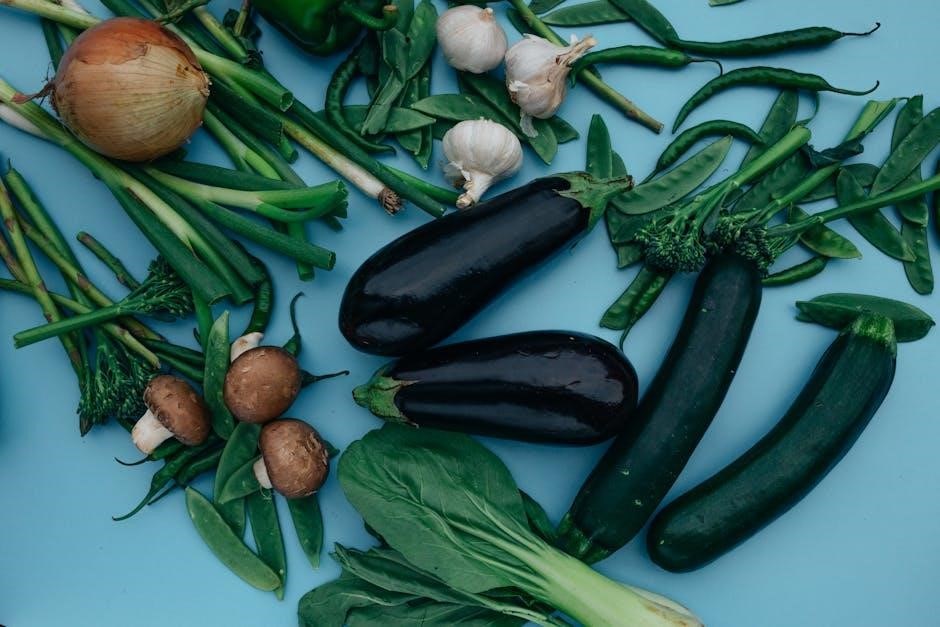
Harvesting Garlic
Garlic is ready to harvest when the tops yellow and fall over; Carefully dig up the bulbs with a fork, avoiding damage. Cure them in a cool, dry place for 2-4 weeks before storing.
Signs That Garlic is Ready to Harvest
Garlic is ready to harvest when the tops begin to yellow and fall over, indicating the bulbs have fully matured underground. Check for firm, well-formed bulbs by gently digging around the plants with a fork. Avoid waiting too long, as over-mature bulbs may split and lose quality. Once harvested, cure the bulbs in a cool, dry, well-ventilated area for 2-4 weeks to enhance flavor and storage life. Proper curing ensures the garlic stays fresh for months.
How to Dig and Cure Garlic Bulbs
To harvest garlic, carefully loosen the soil around the bulbs with a fork, then gently pull the plants by the stems. Avoid using a shovel, as it may damage the bulbs. Once dug, move the garlic to a cool, dry, well-ventilated area for curing. Tie the bulbs in small bunches or spread them out in a single layer to ensure even drying. Keep them away from direct sunlight. After 2-4 weeks, the outer skin will dry completely, and the garlic will be ready for long-term storage.
Proper Storage Methods for Fresh Garlic
After curing, store garlic in a cool, dry place with good ventilation. Ideal storage conditions are between 32°F and 40°F (0°C to 4°C) with low humidity. Place bulbs in breathable containers like paper bags, cardboard boxes, or mesh bags. Avoid refrigeration, as it can cause garlic to become moldy or develop off-flavors. For longer storage, keep garlic away from direct sunlight and heat sources. Properly stored garlic can last for 6-8 months. You can also hang garlic in bunches in a dry, shaded area for natural air circulation.
Common Challenges and Solutions
Growing garlic can face challenges like mold, rot, and pests. Proper curing, crop rotation, and using natural repellents help mitigate these issues, ensuring a healthy harvest.
Dealing with Mold and Rot in Garlic
Mold and rot in garlic often stem from excessive moisture or poor air circulation. To combat this, ensure soil drains well and avoid overwatering. Proper spacing between plants and using clean, disease-free cloves can prevent infection. After harvesting, cure bulbs thoroughly in a dry, well-ventilated area to reduce rot risk. Regularly inspect stored garlic and remove any affected bulbs to prevent mold from spreading. These practices help maintain healthy garlic crops and ensure a successful harvest.
Preventing Pests from Damaging Your Crop
Common garlic pests include aphids, mites, and nematodes, which can damage bulbs and reduce yields. To prevent infestations, use neem oil or insecticidal soap to treat affected plants. Incorporate natural predators like ladybugs to control aphid populations. Rotate crops annually to break pest life cycles and improve soil health. Avoid waterlogged soil, as it attracts pests. Companion planting with marigolds or basil can deter harmful insects. Regularly inspect plants and remove infested areas to prevent the spread of pests, ensuring a healthy and productive garlic crop.



